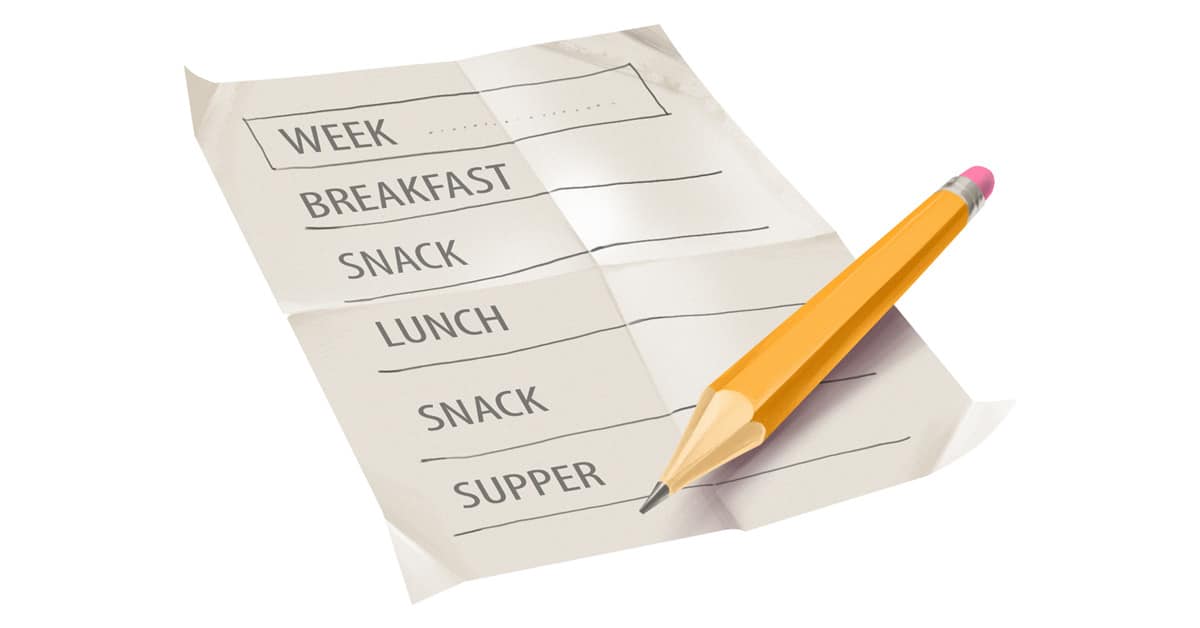It’s natural to be a little nervous when you’re thinking about starting Paleo - and it’s also completely normal to mess it up a little bit at the beginning. Some people spend the first month eating lentils (which aren’t actually Paleo) or unnecessarily avoiding foods like coffee and butter. Little goofs like that aren’t a big deal in the grand scheme of things. But other beginner mistakes can be more serious - they can make Paleo a miserable experience, or even remove essential nutritional content from the diet.
To help prevent those types of mistakes, here are 4 beginner tips to set yourself up for success. They’ll help you avoid nutritional deficiencies, meal planning disasters, analysis paralysis, and getting stuck in a rut that just isn’t working for you.
1. Let Go of the Food Pyramid.

One common newbie blunder is eat a “Paleo” diet that also conforms to the standard low-fat dietary guidelines. It’s very understandable why people do this: they’re starting Paleo to improve their health, but they come into it with a reflexive negative reaction to fat and cholesterol-rich foods like egg yolks and fatty meats. If you don’t question that reaction, it’s easy to assume that Paleo obviously wouldn’t encourage those foods, since it’s supposed to be healthy, right?
This line of thinking leads to a “Paleo” diet that basically looks like the Food Pyramid but with the grains and dairy cut out: egg white omelettes, salad with skinless chicken breast, and steamed vegetables with no dressing.
This type of diet might work for some people who are deliberately planning on a period of extreme effort. But for most newbies, it’s not necessary and it’s so miserable that it understandably makes people want to quit. Paleo isn’t just cutting out grains and legumes. It’s also about adding more nutrient-dense whole foods that have been unfairly demonized because of their fat and cholesterol content. Coconut oil, egg yolks, avocados, and liver won’t make you fat, and the evidence suggests that saturated fat from whole foods isn’t dangerous. The high-fat foods that cause heart disease are Big Macs and pizza, not eggs.
If you don’t accept the science behind this, maybe Paleo isn’t the right diet for you. But if you’re going to do Paleo, let go of the Food Pyramid. Don’t try to combine two sets of incompatible guidelines into one uber-restrictive diet of only vegetables and protein: it’s miserable, it’s unsustainable, and it’s definitely not Paleo.
2. If you care about a specific nutrient, don't guess: look it up!
<em>If you're targeting specific ranges for one or more nutrients</em> (e.g. you want to stay below a certain number of carbs), knowing the nutrient content of your staple foods can save you from a lot of terrible diet advice and unnecessary restriction. Gut instincts and fuzzy assumptions about the nutrient content of different foods can be completely off-base.
Here’s a pop quiz: the average person eating Paleo will typically eat 50-300 grams of carbs per day, with 50-150 being “low-carb” and 150-300 or so being “medium-carb” (These are all ballpark numbers, but they’re close enough for now). Without looking anything up, how do the following foods fit into that daily carb intake?
- 1 cup of beets
- 1 cupof broccoli
- 6 ounces (approximately 1 medium potato) of white potatoes
- 6 ounces of sweet potatoes
If you don’t know and if you’re planning to target a specific carb range on Paleo, you might want to look up the numbers. For example, a lot of people might say that white potatoes have a lot more carbs than sweet potatoes, and that neither would fit into a diet with 150 grams of carbs per day. But those people would be wrong:
- White potatoes and sweet potatoes are more or less equivalent in carbs. 1 medium baked potato, (about 6 ounces) has ~37 grams of carbs. The same amount of sweet potato has ~36 grams of carbs.
- If you’re eating 150 grams of carbs a day, 36-37 grams of carbs from potatoes (white or sweet) could easily fit under your limit.
If a specific nutrient really matters to you, look up a few of foods you plan to eat or avoid. Here is the USDA nutrient database: use it to check the nutrient content of different foods. You can save yourself a lot of pain just by knowing simple facts about the nutrient content of different foods. Don’t rely on vague gut feelings about which foods are “high” or “low” in different nutrients: they tend to be wrong.
On the other hand, there’s no need to quantify everything down to the milligram. If you have a specific reason to track a particular nutrient, then look up the numbers and know-don't-guess how much you're eating. But for everything else, the Paleo template should set you up just fine without a lot of number-crunching.
3. Before you start, do a shadow week.

A shadow week can help you prevent a lot of shopping, meal planning, cooking, and meal prep crises before they ever happen.
To do a shadow week, keep eating the way you normally do, but every time you eat something, write down (a) what it was, and (b) a Paleo alternative that you could have eaten instead. For example, if you had a PB&J for lunch, you could write that down, and then note that a Paleo option would be salad with chicken, avocado, and olive oil/vinegar.
This will help you get a bead on how much you need to buy at the grocery store, and it can double as a starter meal plan. It’s a good way to avoid under-shopping, over-shopping, or meal-planning disasters like forgetting to plan for breakfast. And unlike actual grocery shopping, it’s totally free and takes almost no time.
Bonus: Plan/Preview your Cooking and Prep Time
If you’re coming from a diet of takeout or prepackaged meals, it might be a shock at first to spend so much time cooking (not to mention grocery shopping, washing dishes, finding recipes…). During your shadow week, think about when you’d make all this food. Will you do bulk cooking on the weekend for the entire work week? Invest in a slow cooker? Is there anything you need to buy or dust off?
4. Make a Flexible Commitment
Making a “flexible commitment” to Paleo helps avoid the extremes of analysis paralysis on the one hand and blind dogmatism on the other.
A flexible commitment means that you're committed to eating Paleo (as opposed to, say, falling off the wagon into a pile of donuts), but you're not married to any one specific version or variation of Paleo.
This helps you avoid two common beginner problems:
- Analysis paralysis There's so much information out there that it's easy to get bogged down in the infodump and end up never doing anything because you’re too busy looking for information and trying to figure out in advance what’s “optimal.”
- Dogmatic persistence past the point of usefulness. A lot of people get confused by the information overload, so they just pick one particular approach or program and treat it as gospel. They stay fixated on that specific version of "Paleo" as the “true Paleo” approach, even if it's clearly not working for them and something else might work way better.
To avoid both of these problems at once, pick one version of Paleo that looks good enough to be getting on with and commit to it for a week or two, recognizing that you might change it up in the future. Do that until you can clearly see that it is or isn’t working. Then re-evaluate, research 1-2 things that might not be working for you, and adjust your diet as necessary.
This approach lets you just get started without getting tied down in endless nutrition research. But at the same time, it gives you flexibility to change your approach if you find that it's just not optimal for you. After all, the whole point of Paleo is that it helps improve your health. If it doesn’t help you, it’s not working and it’s time to change things up!
Experienced Paleo eater, what tips helped you as a beginner? Any advice for newbies? Let us know on Facebook or Twitter!





Leave a Reply